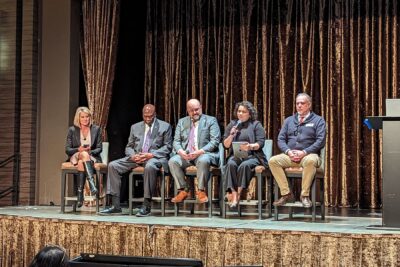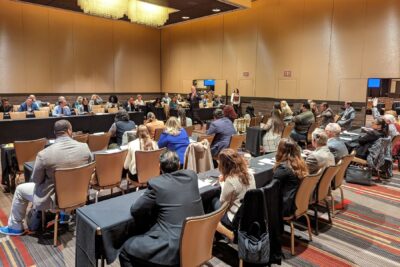Regional Workforce Talent Pipeline Summit Works to Bridge Gap Between Talent Supply and Demand
First-of-its-kind Regional Talent Pipeline Dashboard Debuted
A short broll clip for media use is available for download. Event photos can be found here.
LAS VEGAS — Workforce Connections (WC) and Las Vegas Global Economic Alliance (LVGEA) hosted an industry-driven regional Workforce Talent Pipeline Summit earlier today at M Resort, the first of its kind hosted in Southern Nevada. As part of the ongoing regional Industry Sector Partnerships initiative, the half-day event brought together 200+ industry, education, and workforce partners to discuss workforce trends, highlight employer needs, and explore training programs that are seeing success across the region.
“This summit provides an opportunity for the region’s stakeholders to come together and discuss the current gaps between workforce supply and demand,” said Jaime Cruz, Executive Director of Workforce Connections. “Creating strong talent pipelines in key industries is critical for Southern Nevada’s economic success. We want to give local business leaders a platform to bring forward challenges and allow them to connect meaningfully with policymakers and educators about potential solutions.”
During the event, stakeholders received an exclusive preview of a new regional talent pipeline dashboard tool currently under development by data analytics firm Applied Analysis in partnership with the Governor’s Office of Workforce Innovation. The dashboard is a first-of-its-kind online database of workforce development and higher education programs in the region designed to help business owners envision the region’s future talent pipeline. The dashboard is expected to go live in early 2024.
“The top questions we get asked by businesses looking to move to or expand in Southern Nevada are ‘Do you have the particular workforce we need?’ and ‘Where can I find that workforce?’,” said Tina Quigley, President and Chief Executive Officer of Las Vegas Global Economic Alliance, the region’s economic development agency. “This new tool will allow us to provide data and insights to business leaders, ensuring their growth plans align with the region’s talent potential.”
The dashboard will allow business owners and employers to search for an occupation or industry and receive a report highlighting both the currently available workforce for that occupation along with insights into the number of students currently enrolled in related programs. The tool also allows employers access to detailed information about the region’s training programs, and to connect with providers.
LVGEA and Workforce Connections are requesting the public’s assistance in populating the new talent pipeline dashboard with real time information. Any local companies or institutions that offer training or education programs can submit their information to be included in the dashboard.
“This is a chance for local businesses to participate in the creation of a data-driven talent roadmap for the region,” said Jeremy Aguero, principal analyst with Applied Analysis. “This dashboard will not only showcase talent pipelines already in Southern Nevada but will also help regional leaders understand where talent gaps are, so we can work to strengthen the workforce of tomorrow.”
Today’s workforce summit featured speakers from the UNLV, College of Southern Nevada, University of Phoenix, Touro University, Clark County School District, SumNu Marketing, Empire Cat, Viticus Group, and the Southern Nevada Building Trades Union. A keynote speech by Wall Street Journal bestselling author Ryan Jenkins, an expert on team connection and multi-generational teams, provided insights into how a lack of social connection in workplaces is impacting employee performance, and why business leaders need to be intentional about cultivating connection.
“Connection is now the most valuable workplace currency inside companies, and companies that prioritize belonging in the workplace will retain employees,” said Jenkins. “Cultivating a culture of belonging does take intentional effort, but for leaders who commit the time and energy, that effort will be worth it.”
The event program also included panel discussions on workforce supply and demand, highlighting the efforts at both the company and higher education levels to bridge the gap between talent demand and available workforce. Attendees also had the opportunity to participate in one of three breakout sessions focusing on scaling the existing workforce, career transitions, and the creation of a regional DEI committee. During these sessions, facilitators solicitated feedback from stakeholders on ideas and solutions to local workforce issues.
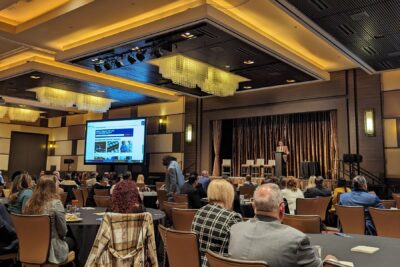
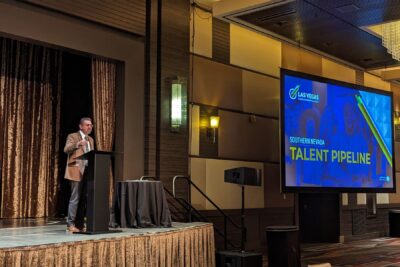
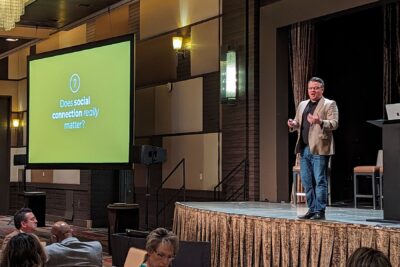 .
. 